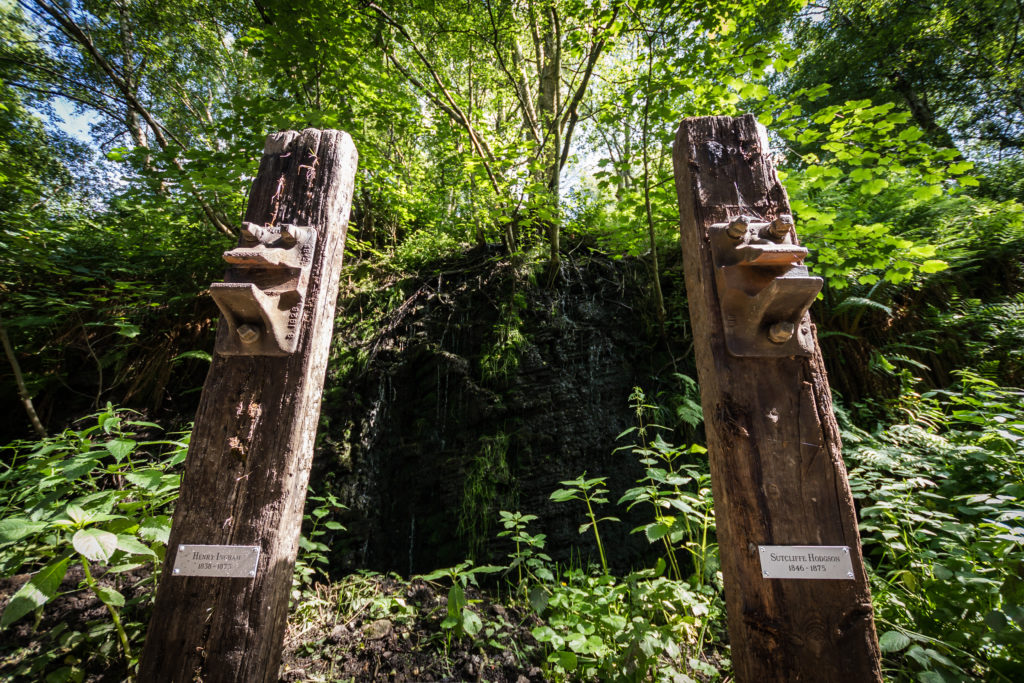Campaigners hoping to reopen a disused West Yorkshire railway tunnel as part of a new cycle route have installed a memorial to the ten men known to have died during its construction.
Work on Queensbury Tunnel, between Bradford and Halifax, began in May 1874 when navvies started to sink a shaft close to its north end. Around 600 men were employed on the project which involved the excavation of 180,000 cubic yards of rock, as well as the manufacture and placement of over seven million bricks to form the arch.
Progress was significantly delayed by the huge volume of groundwater entering the workings. Pumps at five of the seven construction shafts removed 63,000 gallons of water every hour. The 1.4-mile long engineering feat was eventually completed in July 1878, more than two years after the date specified in the contract.
The greatest cost was borne by the workforce; dozens of injuries were overshadowed by ten deaths. The youngest casualty, 25-year-old Frederick Goulding, was crushed between a wagon and a large timber; the eldest was John Swire, 44, who was run over by wagons in the tunnel’s southern approach cutting. Newlywed Captain Pickles was the last to lose his life in June 1877 when he was struck on the head by a half-ton roof support. Others succumbed to explosions, drownings and falls at the shafts.

To honour the navvies, the Queensbury Tunnel Society has erected a memorial comprising two rows of railway sleepers – one for each of the ten men – which stand either side of the path connecting the Great Northern Railway Trail to the tunnel entrance. The materials were mostly donated by the Keighley & Worth Valley Railway whilst the installation work was carried out by industrious supporters of the campaign to save the tunnel.
Norah McWilliam, leader of the Society, said: “The experiences of these men are beyond the comprehension of anyone in the 21st Century. Although they were paid comparatively well, the risks they faced were overwhelming. Every shift could realistically be their last.
“Of the navvies involved in construction, one in every 60 lost their lives; even more would have suffered life-changing injuries. And every accident brought with it the threat of destitution for the family as there was no financial support from the companies involved.
“What we fail to appreciate when we’re sitting in comfort on today’s modern trains is that the infrastructure we’re travelling on, through or over was mostly built 140+ years ago. We owe these men a huge debt for their determination in gifting us our railway network against the odds. The very least we can do is pause to reflect on the sacrifices they made.”

